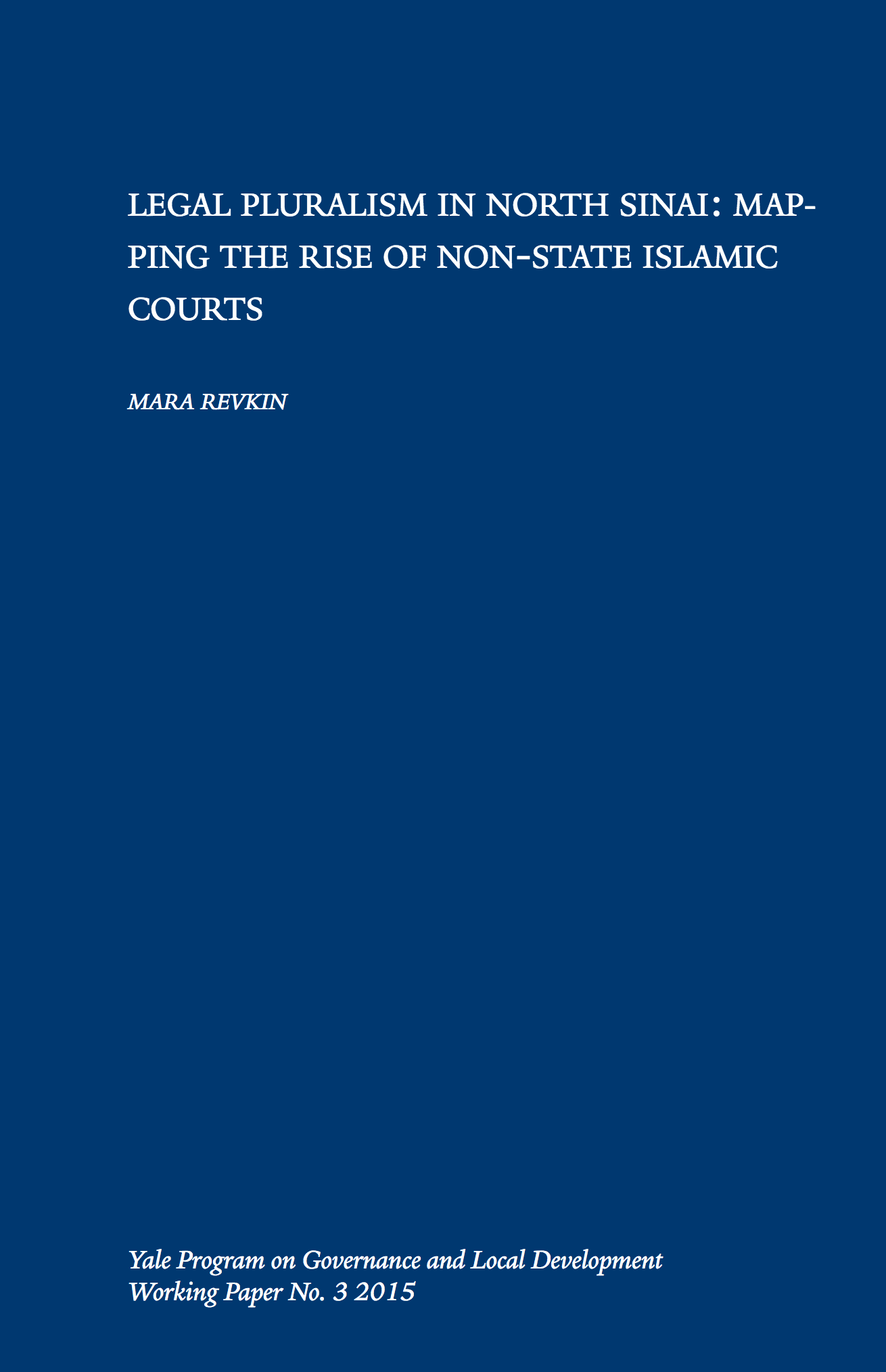No.1 Legal Pluralism In North Sinai: Mapping The rise Of Non-State Islamic Courts
Mara Revkin
Abstract
The concept of legal pluralism, defined as the coexistence of multiple legal orders within a common geographical area, is underutilized in an analysis of revolutionary and transitional change in the Middle East but nonetheless offers a powerful framework for explaining how and why states lose their monopoly on the production and enforcement of law. Nowhere is the significance of legal pluralism more apparent than in Egypt’s Sinai Peninsula, where non-state shari‘a courts emerged in the post-revolutionary security vacuum in 2011 and quickly established themselves as the most credible providers of law and order in areas of North Sinai that had been largely abandoned by the Egyptian government. In addition to challenging the sovereignty of the Egyptian state, shari‘a courts also destabilized the Bedouin system of pre-Islamic customary law (‘urf) that has historically regulated tribal affairs in the absence of a strong central government in the Sinai Peninsula.
This paper, based on field research conducted in the governorate of North Sinai in August 2013, attempts to map the triadic interactions between the three distinct legal systems — shari‘a, ‘urf, and state — that coexisted and competed within the same territorial area during the period of time from the January 2011 revolution until September 2013. Using an interdisciplinary approach that combines theories of legal pluralism and historical institutionalism, this paper first identifies two primary historical explanations for the emergence of shari‘a courts: (1) the Islamizing effects of state-sponsored development and labor migration policies on Bedouin society in North Sinai starting in the 1980s; and (2) growing disillusionment with state and tribal judiciaries viewed as complicit in the authoritarianism of former president Hosni Mubarak’s government. Second, this paper addresses the resurgence of militant Salafism in North Sinai following the Egyptian military’s return to power in July 2013 and argues that the subsequent exclusion of moderate Islamists from the formal political process has had the effect of channeling opposition activity into non-state institutions, including shari‘a courts, which are increasingly functioning as platforms for resistance against government authorities.
